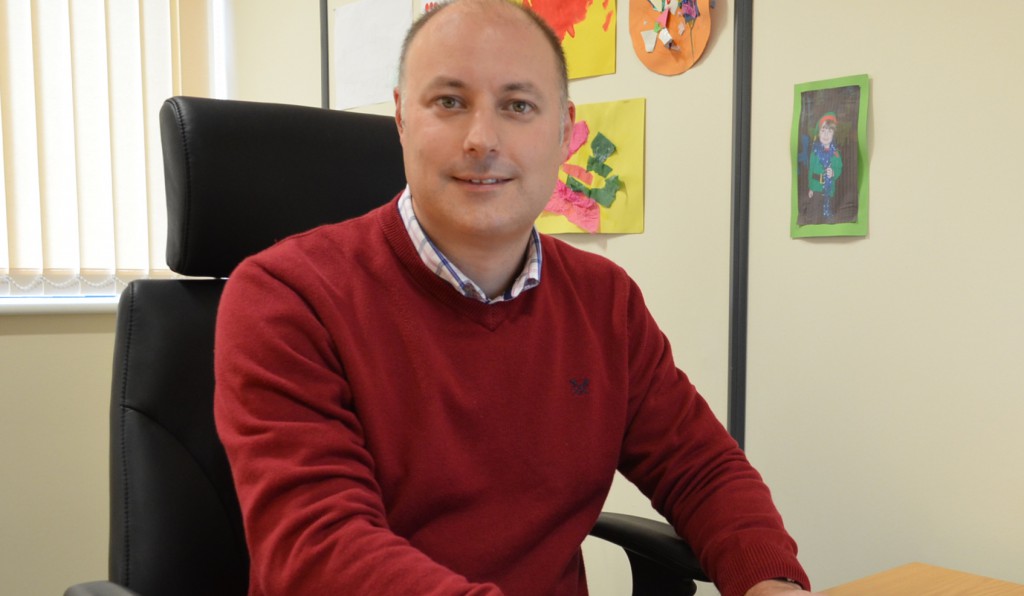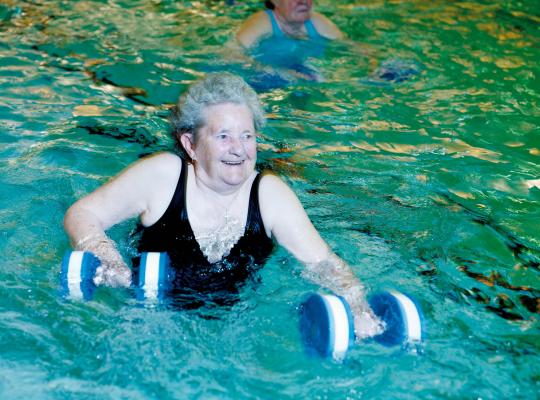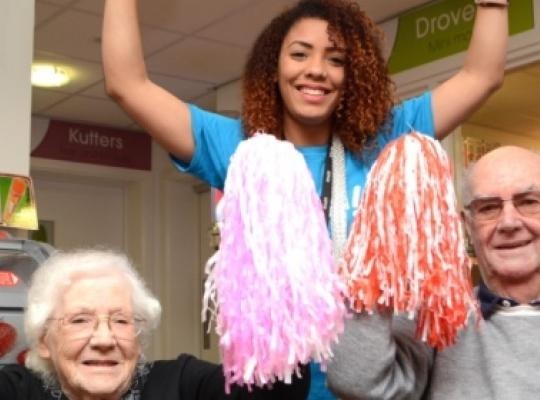The following article has been written by GP Nick Tupper
As a doctor working at a large inner town GP practice in one of the country’s poorest areas, I have to try and manage the medical problems caused by inactivity on a daily basis.
Every week I see a steady flow of patients with a range of long term health conditions and the common factor amongst a lot of them is their weight.
My challenge as a doctor is to try and prevent them from progressively getting worse and acquiring more long-term problems.
We know that people don’t age at the same rate and the way their health declines as they age is dependent on a number of factors, including genetics, environmental impact and lifestyle choices. But new research recently published by the British Medical Journal highlights how loss of fitness is inextricably linked to a subsequent decline in health.
We know that nearly 40 per cent of people aged over 55 are inactive in that they do not complete at least 150 minutes of moderate to vigorous activity each week.
This lack of activity is a slow burning fuse that gradually increases the risk of developing a range of long-term conditions, including cardio-vascular disease, stroke type 2 diabetes, dementia and depression.
It’s a big problem for the NHS and social care as the number of people living with a long-term health condition is growing by about 10 per cent for every 10 years they age, with multiple conditions stacking up on the way.
Crucially, the physical activity sector has been expanding in recent years, and you don’t have to look far in local communities to see gyms and leisure centres sprouting up.
But, sadly, this expansion has not been matched by a corresponding increase in uptake by users. Evidence points to participation decreasing as physical activity is edged out of daily life.
As a country, we need to do better. Analysis by ukactive found that of the 500 million visits to public community facilities, only 20 per cent were made by people aged 55 and over.
And the picture is bleaker when participation by the over-65s is reviewed, with this group accounting for only nine per cent of visits.
Latest available figures show that the NHS in England spends over £17 billion a year on drug treatments prescribed at GPS surgeries and hospitals, a figure that has grown massively over the past five years, partly because of the rise in the number of people who have one or more long-term conditions.
This provides a unique opportunity for the physical activity sector to step up to the mark to help ease the burden on the NHS and deliver quantifiable benefits in terms of health improvement - prescribing exercise instead of pills.
Physical activity is already hailed as a ‘miracle cure’ by the Academy of Medical Royal Colleges as it treats, manages and helps prevent more than 20 lifestyle related long-term conditions, including coronary heart disease, diabetes and many cancers. Our challenge is to raise its status across the healthcare community so it can operate on a level playing field, alongside prescription medicines.
As a GP I can expect my over-65 year old patients to see me around eight times a year, increasing to nearly double this by the time they reach their mid-eighties. Through my involvement with Think4Wellbeing I am familiar with the Chief Medical Officer’s guidelines for physical activity and able to talk to my patients about them, but I wonder if other GP colleagues across the country feel as confident?
It is easy to reach for my prescription pad - more that 10 million prescriptions are dispensed in the country every week, alongside a similar number of lab reports.
We can make change happen incrementally, but effectively, across the healthcare system, from pharmacies to GP surgeries, hospitals and much more. We can make every contact with a patient count by using it as an opportunity to convey the message that physical exercise is - as my learned colleagues say - a miracle drug - and driving forward positive behavioural change.
Building more physical activity into daily life is an opportunity to rein in the ageing process and heard off the loss of function that inactivity causes.
It will require some changes, but not massive ones, across the physical activity sector, including tailoring their service ‘offer’ to suit the needs of different demographics. We know for example, that around 95 per cent of the retired population prefer to take part in physical activity between the hours of 9am and 12 noon, when there tends to be spare capacity.
The benefits of physical activity far out-weigh the low health and safety risks that they carry and all ages can prevent their health from declining by improving their fitness.
As people age we should look to buy them walking shoes rather than slippers.
(ends)
Additional Information
This week the new Moving Medicine tool was launched at the International Society for Physical Activity and Health (ISPAH) Congress
Sport England have supported the Faculty of Sport and Exercise Medicine to produce the free tool, in partnership with Public Health England and with support from National Lottery funding.
The tool aims to help healthcare professionals talk to patients about the benefits of physical activity.
The Moving Medicine tool will help people working in roles such as doctors, nurses and physiotherapists advise patients on how physical activity can help to manage their conditions, prevent disease and aid recovery.
Read the whole article explaining the background to the new tool


